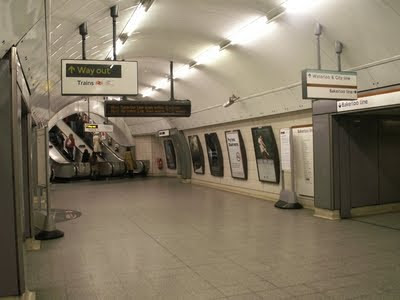DUBAI — Coffee... croissant... and the 6am Metro. In a schedule set months before launch, residents took a detour from daily routes to catch the first train out of any of the 10 Metro stations that opened on Wednesday, living a moment that will be fondly narrated for many years to come.
As the first train pulled into the Al Rashidiya station, the security guards gave way to anxious commuters who made a dash for the ticket counters and then scurried to platform one.
UAE nationals had a streak of pride in their talk and expatriates a spring in their walk — save the occasional frustration at the ticket counters and the confusion over destinations caused by incorrect announcements.
UAE nationals had a streak of pride in their talk and expatriates a spring in their walk — save the occasional frustration at the ticket counters and the confusion over destinations caused by incorrect announcements.
But minor glitches aside, the first journey was a joy ride for all.
One to fly in the skies, Walid Al Awadhi said he took a day off from his job as a pilot to ride on the first train. ‘It feels good to be here,’ said Al Awadhi of Emirates Airline. ‘Very soon the Metro will achieve all that it has promised. If I had to compare the Dubai Metro with that of other countries, I would have to say that the price, the architecture and design is far superior.’
As the sliding doors opened, commuters were greeted with an electronic announcement and smiling attendants asked passengers to take a seat. A sudden jolt marked the beginning of a ride to remember. As the train moved in and out of underground stations and cruised over elevated tracks, familiar skyscrapers now looked larger than life and the landscape, according to many, ‘simply breathtaking’.
Halting for a few seconds at every station, not many alighted: most commuters wanted to experience the full stretch of the Red Line.
Dhiren Khiara’s of the Dubai International Academy lunged his backpack onto the train from Khalid Bin Al Waleed station.
Finally,’ he said, ‘I will no longer have to rely on the schoolbus for pick-up and drop-offs.’ A bus fee of Dh4,000 per year will be eliminated — replaced by the modest cost of the Nol silver card.
‘I’ve worked it out and it is much cheaper,’ he said. ‘Also, often stay-backs in school mean I need to ask my parents to pick me up.’ With the Metro, Dhiren will hail a feeder bus from a stop near his school to the Mall of the Emirates station and catch a train to Khalid Bin Al Waleed station, his initial boarding point.
Though the day began with eerie silence at mid-stations, commuters with the intention of reaching the workplace filled the compartments at peak hours. Conversations filled the air, as strangers became friends and business cards were exchanged.
‘You get to meet so many people, find out about so many things,’ said Shabana Hashim, who had just struck a conversation on the various metro systems world over with co-passenger Benjamin from Al Jafiliya station.
‘There is no driving stress and you can read a book, listen to music or work during the journey.’
Even a minor breakdown could not dent the enthusiasm of Metro users on Thursday.
‘The train broke down between Al Nakheel Harbour Station and Mall of the Emirates Station today morning but engineers fixed the problem,’ said an RTA official, adding that they were small issues and could be expected on the first day.
The milestone journey came to an end at the Nakheel Harbour and Tower station. Victoria Golden, who had completed the entire run with daughter Sophie, got off with a content look on her face. The Metro is not a functional option for her but the first ride was something she has to witness.
‘Sophie’s school begins at 8 am, so I thought we must make the journey before I drop her off,’ Victoria said. ‘I’m quite impressed with the cleanliness and the infrastructure. Though I will not be able give my car up for public transport, my family will be using the Metro over the weekends and in the evenings.































